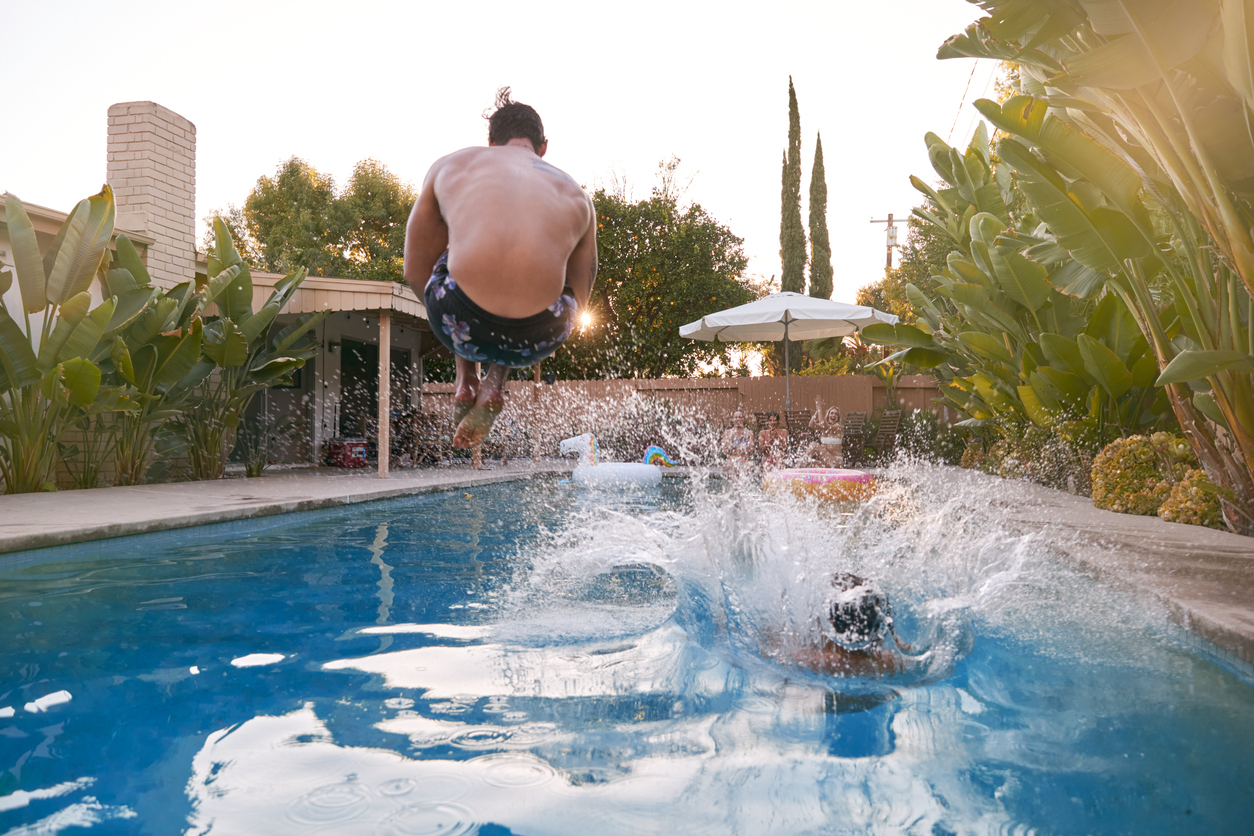Diving into One of the Most Common Questions Pool Designers Are Asked – What is the ‘Perfect’ Pool Depth?
When it comes to building a new in-ground concrete swimming pool, determining the appropriate depths is crucial to ensure both safety and enjoyment. Here’s a list of common considerations:
- Shallow End:
The shallow end of a swimming pool is an essential feature for individuals of all ages. As the name suggest, it is the most shallow area of the open ‘swim space’. Here are some key points to consider for the shallow end depth:
a. Typical Depth: The shallow end typically ranges from 3 to 4 feet deep. This depth allows for easy access, especially for children and less experienced swimmers.
b. Safety Considerations: A shallow end offers a safe area for standing or playing, providing a comfortable zone for younger swimmers and non-swimmers to enjoy the pool under supervision.
c. Recreational Activities: The shallow end is suitable for water games, such as volleyball or basketball, where participants can stand comfortably while playing. It is also the most commonly used gathering space within the pool and is optimal for lounging and relaxing.
- Transition Area:
The transition area, often referred to as the slope or slope break, connects the shallow end to the deeper portions of the pool. Consider the following points for the transition area:
a. Gradual Slope: The transition area should have a gradual slope to ensure a smooth progression from the shallow end to the deeper sections of the pool. This gradual slope enhances safety and enables swimmers to adjust to the increasing water depth gradually.
b. Depth Range: The depth in the transition area can vary, typically ranging from 3 to 6 feet. One commonly overlooked factor is the grade of this slope. The greater the difference in the shallow and deep end depths, the steeper this grade will be. Pool length should also be considered when deciding the ultimate depths as dropping more than a couple feet on the slope can often render it useless for standing as it is too steep.
- Deep End:
The deep end is designed for jumping, swimming laps, or other water activities that require more depth. Here are some considerations for the deep end:
a. Typical Depth: The deep end generally ranges from 5 to 6 feet deep in typical backyard pools, but can be deeper when the homeowner wishes to accommodate diving or other more challenging aquatic activities. It should be noted that these deeper depths cannot be achieved in all soil and location conditions. An analysis of your site specifics conditions may be necessary to determine how deep your pool can safely be.
b. Diving Board/Slide Requirements: If you plan on have a diving board or slide installed, you will need to ensure that the depth of the pool is sufficient to meet recommended safety standards. You will need to consult both your local municipality and the recommendations from the manufacturer.
c. Safety Measures: It is essential to install appropriate safety features in the deep end, such as depth markers, pool alarms, and safety ropes, to promote a safe swimming environment.
Conclusion:
When constructing a new in-ground concrete swimming pool, selecting the right depths is crucial to meet safety requirements and create an enjoyable swimming experience. The shallow end provides accessibility and safety for all users, while the transition area facilitates a smooth transition to deeper sections. The deep end caters to more advanced swimming activities. Consulting with a professional pool builder or engineer can ensure your pool depths align with industry standards and your specific requirements, resulting in a functional and enjoyable swimming pool for years to come.
Additionally, other factors to consider when determining pool depths include the overall size of the pool, its intended use (recreational, lap swimming, or diving), and the preferences and needs of the individuals who will be using the pool.
Ultimately, finding the right balance between safety and functionality is key when deciding on swimming pool depths.




Comments are closed